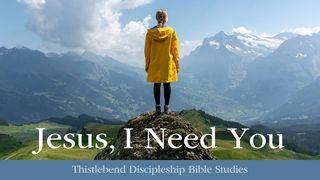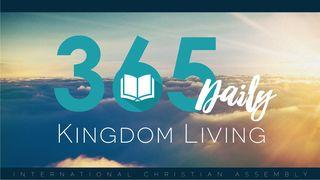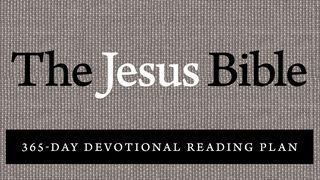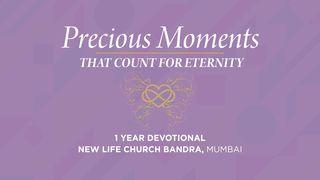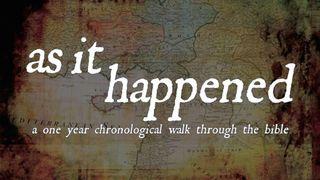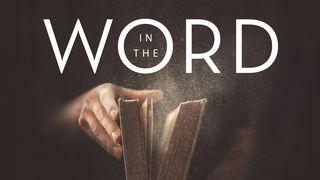For The Love Of GodSample

EZEKIEL WAS JEREMIAH’S contemporary. Though he was born into a priestly family, Ezekiel was removed from the temple. In March, 597 B.C., he, young King Jehoiachin, the Queen Mother, the aristocracy, and many of the leading priests and craftsmen were transported seven hundred miles to Babylon. The young king was in prison or under house arrest for thirty-seven years. The exilic community, impoverished and cut off from Jerusalem and the temple, dreamed nostalgically of home and begged God to rescue them. They could not conceive that in another decade Jerusalem would be utterly destroyed. On the banks of the Kebar River—probably an irrigation canal swinging in a loop southwest from the Euphrates—the exiles tried to settle. And here, according to Ezekiel 1, when he was thirty years old and in the fifth year of his exile (i.e., about 593, still six years before the destruction of Jerusalem), Ezekiel received an extraordinary vision.
Detailed explanation of this apocalyptic vision demands more space than I have here. But some observations are crucial:
(1) In general terms, what Ezekiel sees is a vision of a mobile throne, the mobile throne of God. (I once preached on this passage to some hearing-impaired folk, and more than one thought I was saying it deals with the mobile phone of God!)
(2) The throne is made up of four “living creatures,” each with wings outstretched to touch the adjacent two at the wingtips, so that together the four creatures make a huge, hollow square. Inside this space there are torches, flashes of lightning, and fire. Each of the four living creatures has four faces—probably a way of signaling that God’s throne is intelligent (the human face), royal (the lion), strong (the bull), and compassionate (the eagle, cf. Ex. 19:4; Isa. 40:31). Beside each creature is a pair of wheels, intersecting each other so that they cannot fall over. The entire structure moves in straight lines, like a cursor on a monitor only in three dimensions, propelled by the wheels and additional wings of the living creatures, directed cohesively by the Spirit. Above the heads of the creatures, and supported by them, is a platform like a giant wok, sparkling like ice or hoarfrost. Above that is the throne of God.
(3) The importance of this mobile throne becomes clear later in the book. Here we must grasp two things: (a) The closer the vision gets to God himself, the more distantly he is described. The culmination—”This was the appearance of the likeness of the glory of the LORD” (1:28)—elicits not an artist’s conception, but worship. (b) More broadly: visions of God always induce brokenness, humility, and worship (cf. Isa. 6; Rev. 1, 4-5).
Detailed explanation of this apocalyptic vision demands more space than I have here. But some observations are crucial:
(1) In general terms, what Ezekiel sees is a vision of a mobile throne, the mobile throne of God. (I once preached on this passage to some hearing-impaired folk, and more than one thought I was saying it deals with the mobile phone of God!)
(2) The throne is made up of four “living creatures,” each with wings outstretched to touch the adjacent two at the wingtips, so that together the four creatures make a huge, hollow square. Inside this space there are torches, flashes of lightning, and fire. Each of the four living creatures has four faces—probably a way of signaling that God’s throne is intelligent (the human face), royal (the lion), strong (the bull), and compassionate (the eagle, cf. Ex. 19:4; Isa. 40:31). Beside each creature is a pair of wheels, intersecting each other so that they cannot fall over. The entire structure moves in straight lines, like a cursor on a monitor only in three dimensions, propelled by the wheels and additional wings of the living creatures, directed cohesively by the Spirit. Above the heads of the creatures, and supported by them, is a platform like a giant wok, sparkling like ice or hoarfrost. Above that is the throne of God.
(3) The importance of this mobile throne becomes clear later in the book. Here we must grasp two things: (a) The closer the vision gets to God himself, the more distantly he is described. The culmination—”This was the appearance of the likeness of the glory of the LORD” (1:28)—elicits not an artist’s conception, but worship. (b) More broadly: visions of God always induce brokenness, humility, and worship (cf. Isa. 6; Rev. 1, 4-5).
About this Plan

A daily devotional for discovering the riches of God's word: For the Love of God is a daily devotional designed to walk a person through the Bible in a year while assisting the reader in discovering the riches of God's Word. Our hope is that this daily devotional will deepen your understanding and appreciation of God's Word, for the love of God.
More
We would like to thank The Gospel Coalition for providing this plan. For more information, please visit: thegospelcoalition.org

